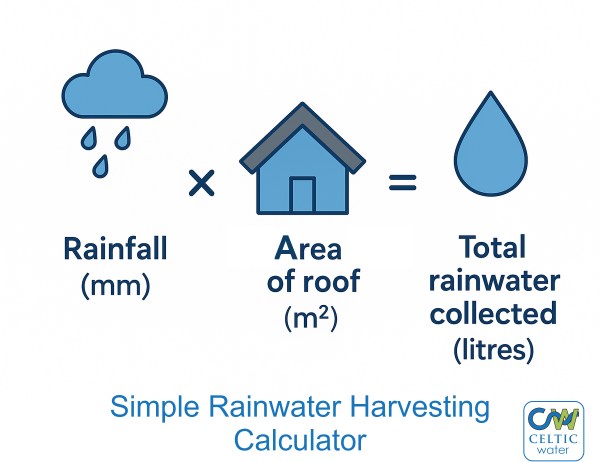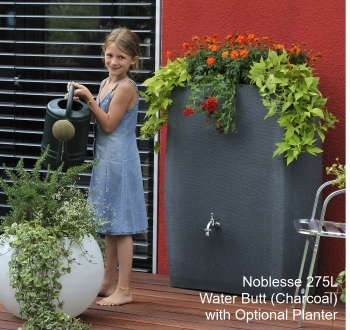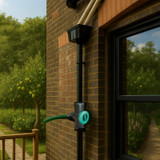Simple Rainwater Harvesting Calculator UK
How much rainfall does it take to fill a water butt from a downpipe?
Water is a finite resource, and yet the demand for everyday use continues to grow. Collecting rainwater from your roof is an easy and smart way of reusing free water. Water butts are an excellent way to store water for later use in gardens. With the price of mains water increasing, if you want to be sure you can care for your garden during the summer months, water butts are an obvious choice.
Rainwater Harvesting Calculator UK
The volume of rainfall that can be collected is dependent on the surface area of your roof and the amount of rainfall received. The simple calculation is:

To find out about your local rainfall data, visit the Met Office’s website for weather data and find your closest climate station (weather station) in the UK, where you can find your monthly rainfall average. To calculate a daily average, add up all the months you’d like an average for, divide by the total number of months, then divide again by 30 (days). This gives a daily rainfall average for the time period you’d like (mm).
* For this simple rainwater harvesting calculator, just measure the total horizontal area of your roof, think of it as the flat footprint of your roof. No need to factor in the slope, pitch, or which direction it faces in relation to the prevailing weather. Of course, the material of your roof also affects how quickly rainwater will flow over your roof, how much is evaporated and absorbed into the roof material (also known as the “runoff coefficient). A slate roof or a metal roof is highly water-resistant, and water could evaporate from the roof. The smooth surface allows water to flow off quickly into your downpipes. Those types of materials have a runoff coefficient of 0.9. Contrarily, a green roof slows the flow of water over your roof due to the vegetation absorbing the water, which delays its release down your downpipe. Green roofs are therefore generally given a runoff coefficient of 0.3. If you would like a more accurate Rainwater total, you could multiply the total rainfall by the runoff coefficient.
Example Rainwater Harvesting Calculation (UK)
In Wales, the growing season runs from March to August. During this period, the average rainfall is about 3mm per day.
The average roof area for a home in Wales is 100m², so:
3mm × 100m² = 300 litres
This means around 300 litres of rainwater could flow through your downpipe each day, on average.
If you have two water butts, each holding 150 litres (one on each side of the pitched roof), both could fill up on a typical rainy day.
To ensure a steady water supply for your garden during dry periods, it’s a good idea to install larger water butts or add more storage.
 Benefits of a water butt
Benefits of a water butt
- Cost savings - you will save money from your water bill as your mains water will be reduced.
- Environmental impact - by reusing rainwater, it makes your house more sustainable.
- Better for plants. Plants prefer rainwater to mains water. Mains water is slightly chlorinated. The level of chlorine in mains water is low; it is added in the final stage of water treatment to kill bacteria that might be present in the mains pipe network.
- A water butt can reduce stress on local drainage systems by reducing total or timing of the surface flow (slows the flow).
- Drought resistance - by having a water butt, you ensure an accessible and reliable source of water during dry spells and summer months for your garden.
- Easy to install - there is no need for specialised equipment, and they can easily be installed next to a downpipe on your house or shed.
- Quick payback - water savings compared to the price of a water butt (or lost plants) is relatively short-term.
- Takes up minimal space and can be aesthetically pleasing, so it can blend into your garden design easily or be a feature in itself.
- Some water butts come with integral planters, meaning you do not have to sacrifice valuable growing space.
- Easy to upgrade to larger capacity water butts, or to interlink water butts.







